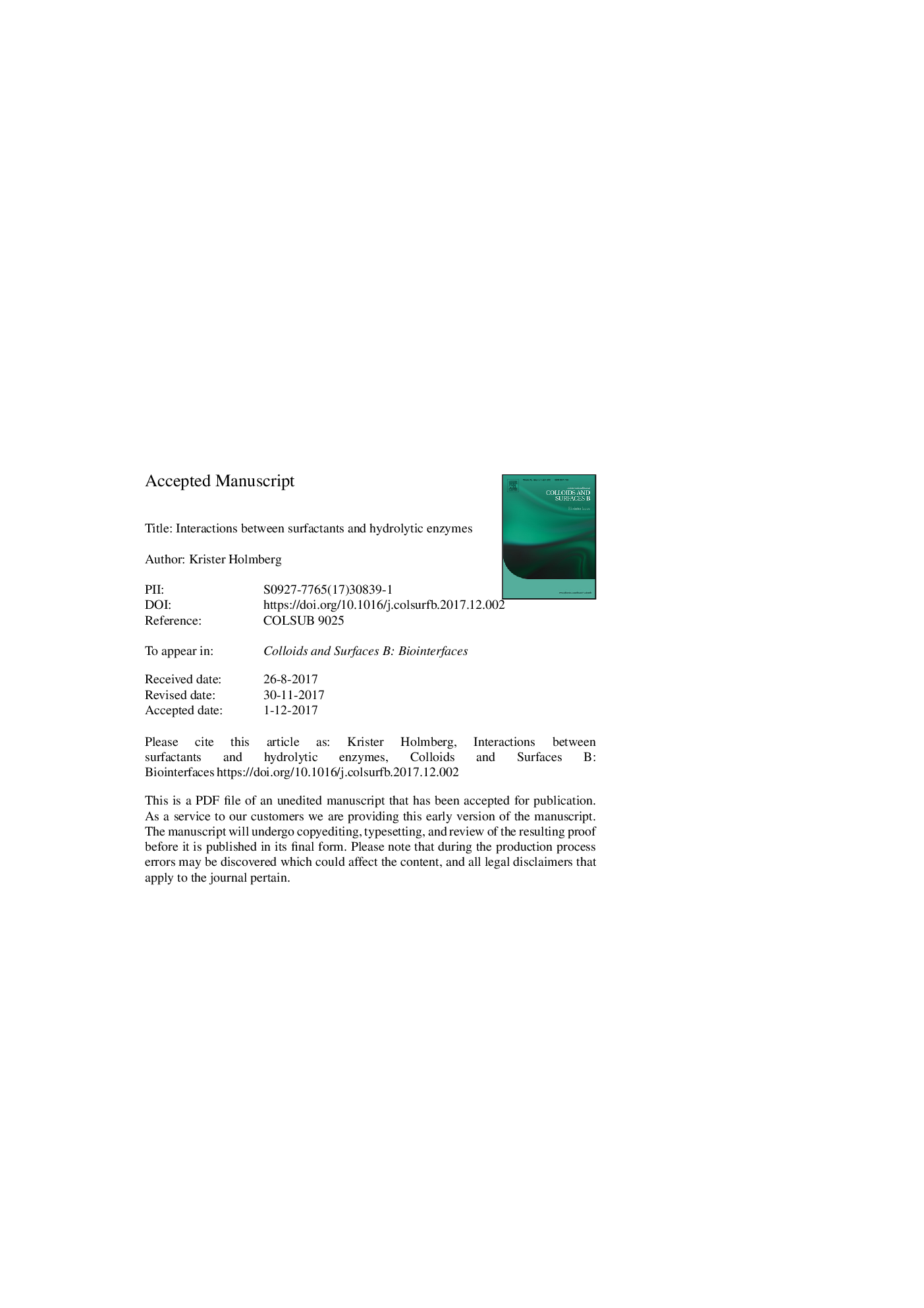| Article ID | Journal | Published Year | Pages | File Type |
|---|---|---|---|---|
| 6980380 | Colloids and Surfaces B: Biointerfaces | 2018 | 21 Pages |
Abstract
After an introduction of the topic the review briefly discusses enzyme catalyzed reactions where surfactants are substrates for the enzyme. The rest of the review relates to associations between surfactants and hydrolytic enzymes without the surfactant being a substrate in the reaction. A discussion about general principles for such interactions is followed by a survey of the relevant literature related to four important types of hydrolytic enzymes: lipases, proteases, amylases and cellulases. It is shown in the review that the effect exerted by the surfactant differs between the different types of enzymes; it is therefore difficult to make general statements about which surfactants are most detrimental to the activity of hydrolytic enzymes. However, as a general rule nonionic surfactants can be regarded as more benign to an enzyme than anionic and cationic surfactants. This difference can be ascribed to the difference in binding mode. Whereas a nonionic surfactant only binds to the enzyme through hydrophobic interactions, an ionic surfactant can bind by a combination of electrostatic attraction and hydrophobic interaction. This latter type of binding can be strong and lead to conformational changes already at very low surfactant concentration, often far below its critical micelle concentration.
Related Topics
Physical Sciences and Engineering
Chemical Engineering
Colloid and Surface Chemistry
Authors
Krister Holmberg,
